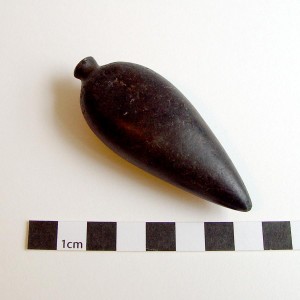The Connecticut River is the longest river in New England. Designated the “long tidal river” by the Algonquian peoples of southern New England, it stretches over 410 miles and passes through four states—starting at the northern tip of New Hampshire along the Quebec border and passing through Vermont, Massachusetts, and Connecticut on its way to Long Island Sound. For thousands of years, the Connecticut River’s abundant resources have drawn inhabitants who shaped and reshaped the surrounding area in meaningful, albeit not always positive, ways.
The evolution of the Connecticut River began with its emergence over 10,000 years ago at the end of the last ice age. The first inhabitants of the Connecticut River Valley not only used the river for navigation and extension of trading routes but also for the fertile hunting and farming lands it provided. These forebears of contemporary tribes left behind artifacts researchers are still finding today—some of which are over 5,000 years old.

Native American plummet or netsinker from the Windsor area – Connecticut State Museum of Natural History, Norris Bull Collection
The first Europeans, the Dutch, arrived in what is now Connecticut around 1614. Developing trade relations among indigenous groups and the new arrivals became more complicated with the establishment of English colonies in Massachusetts. As early as 1631, Native groups who lived along the river traveled up to the Massachusetts Bay and Plymouth colonies seeking to strengthen their position against the growing economic and political power of the Pequot-Dutch trading alliance. Despite being offered incentives to establish a presence in the river valley, the English initially expressed little interest until September 26, 1633, when a group of Plymouth settlers under William Holmes sailed up the Connecticut River.
The group passed the Dutch fort located at modern-day Hartford and established a trading post of their own, just south of where the Farmington and Connecticut Rivers came together. Over the next two years, another group of settlers from Massachusetts, and one which came from England, came to the area and formed what eventually became the colony of Connecticut. The Connecticut River’s importance as a trade route continued to increase, with English settlers moving up into New Hampshire and Vermont in search of pelts and other marketable goods. By the late 18th and early 19th centuries, the river boasted a robust shipbuilding industry and became a vital route for transporting lumber.
19th-Century Industry Transforms the River
Industrialization in the 1800s introduced an entirely new array of influences that reshaped how people utilized the river. While farming and logging had caused tremendous upheaval to the Connecticut River Valley in centuries prior, industrialization accelerated these processes on a massive scale. Industries diverted the natural flow of the river in order to generate power, while dumping industrial wastes that threatened to destroy fragile ecological environments downstream.
The abuse heaped upon the river continued into the 20th century. Agricultural run-off from commercial farming and, in particular, the valley’s thriving tobacco industry, further polluted the river. The end of the Second World War brought with it the introduction of new chemical dyes and pesticides, which the river proved incapable of assimilating. The once pristine waterway was now a river of flowing toxins.
In 1965, actress (and Connecticut Resident) Katharine Hepburn narrated the documentary The Long Tidal River, in which she called the Connecticut River “the world’s most beautifully landscaped cesspool.” This film helped spark a burgeoning environmental movement in New England that called for the creation of more sewage treatment plants and tighter restrictions on industries polluting the environment.
An American Heritage River
In 1973, public pressure helped bring about the creation of the Connecticut River Gateway Commission, which monitors standards for development of riverfront land. Additional legislation targeting the cleanup of the Connecticut River helped increase the quality of the surrounding environment, slowly bringing back schools of shad and herring to the river, and in 1989, the nesting of bald eagles for the first time in over a century.
Thanks to new legislation in 1995, the entire Connecticut River watershed became the Silvio O. Conte National Fish and Wildlife Refuge. Three years later, the Connecticut River received a designation as an American Heritage River, and it remains protected as just one of 14 rivers in the country to be recognized as such.









